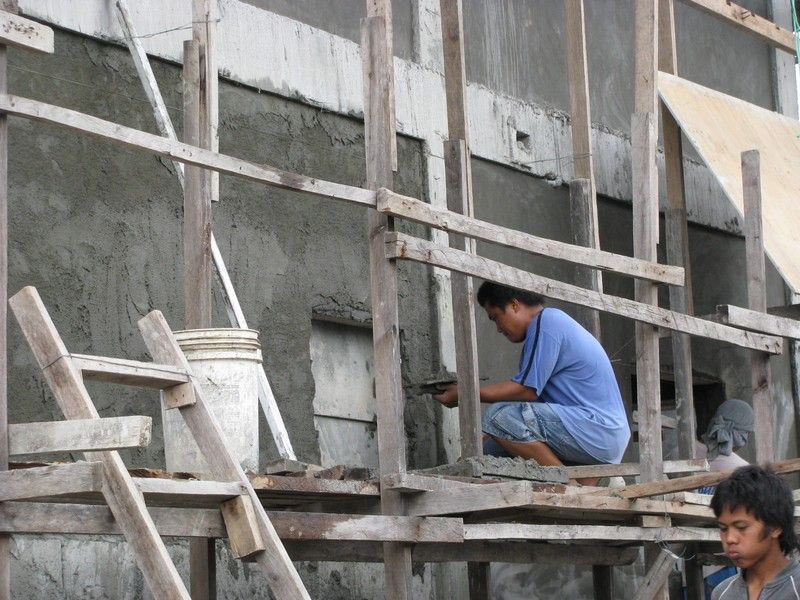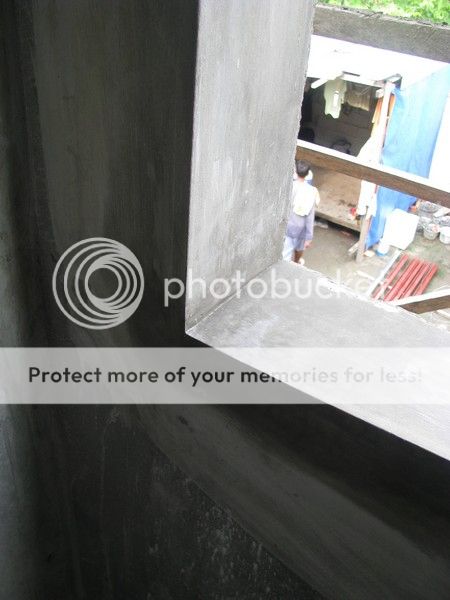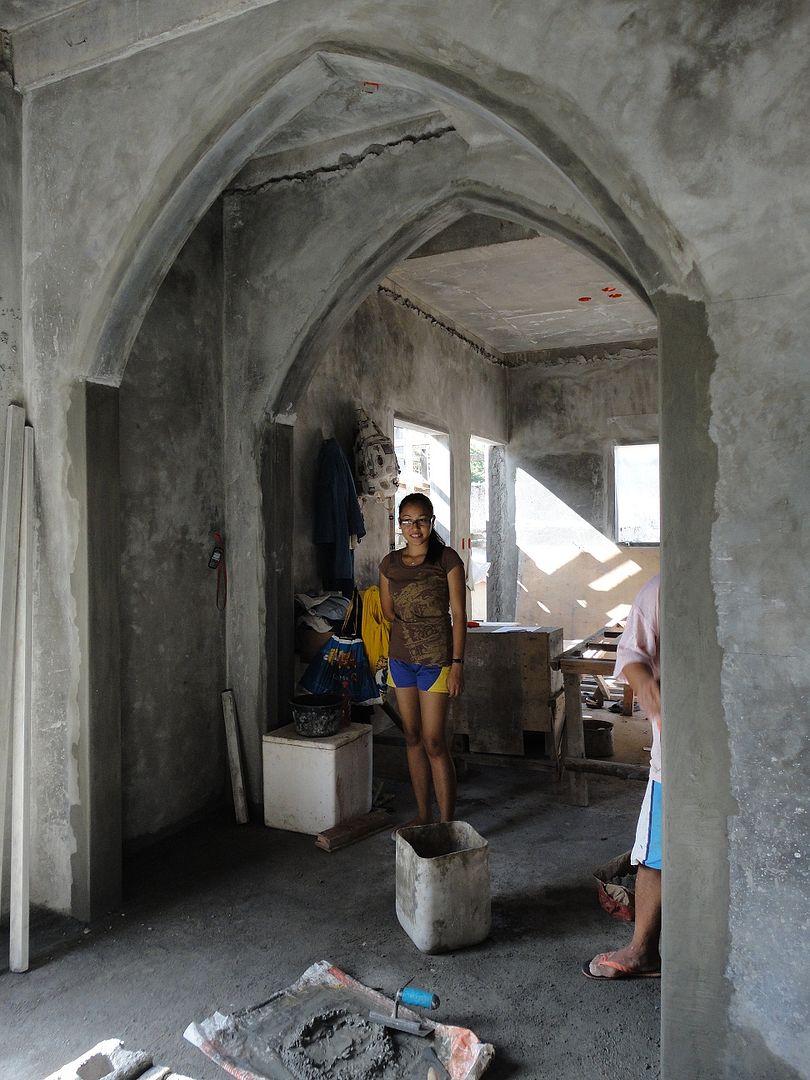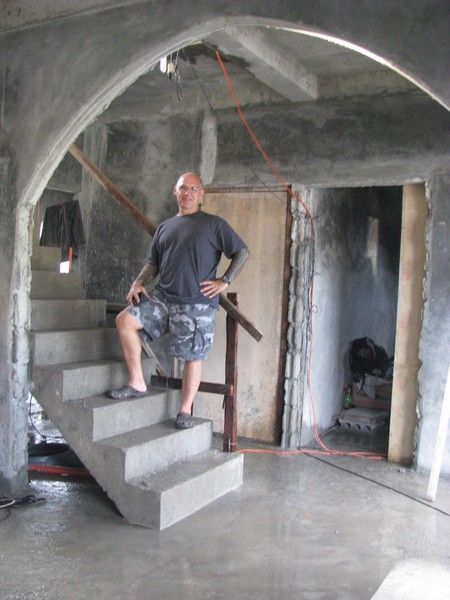cheers joe but i used to go to the gym all the time i know what you mean about the muscles surrounding the joint that is true, but it now feels like my joints on my knees are bone on bone and my gammy elbow means i cant stretch my arm out with anything heavy in it the physio exorsices are supposed to strenghen the core muscles but are doing nothing thanks for your suggestion thoughim not that busy im stuck at home with tennis elbow unable to work
Have you considered going to the gym? I've had aches and pains in the past but since going to the gym regularly they've all gone away. The theory is that if you strengthen the muscles surrounding the dodgy joint, they'll take the strain and stop the joint from sliding around and getting inflamed.
You are using an out of date browser. It may not display this or other websites correctly.
You should upgrade or use an alternative browser.
You should upgrade or use an alternative browser.
Rendering brick work
- Thread starter deanfrench
- Start date
Sponsored Links
- Joined
- 28 Oct 2005
- Messages
- 31,281
- Reaction score
- 1,997
- Country

Something I heard not long ago that I didn't know is that cartilage never regenerates. When you've worn it out then you need a new joint. Sounds like you might be in that category. How about switching to decorating to take the stress off the joints by endless plastering? I hate to say it, but you'll have to consider a (partial at any rate) career change.
yes i realise that i will have to do something else eventually, my friend has said that if he gets a big contract hes after "about 5 years work" then he will take me on tape and jointing, he uses mechanical stuff like boxes on poles that put the jointing compound on for so you dont have to trowel it on, and industrial sanding machines and rollers to put the tape on ect, its easy work "but" it all looks a bit far off at the moment, the surgeon has told me if i had partial knee replacements then i will still be able to do a fair amount of plastering, but if i had to have full ones then ill be not able to plaster that muchSomething I heard not long ago that I didn't know is that cartilage never regenerates. When you've worn it out then you need a new joint. Sounds like you might be in that category. How about switching to decorating to take the stress off the joints by endless plastering? I hate to say it, but you'll have to consider a (partial at any rate) career change.
i think bostiks comment is uninformative, as they havent told you you can apply a mechanical key if i was you i would spatterdash the wall with an sbr slurry coat and cement, and render over the top, very easy to do http://www.permagard.co.uk/media/uploads/SBR Bonding Additive Data Sheet.pdf aso you will see in the instructions that an sbr slurry coat is recommended for low suction backgrounds contradicting what he has told you about none porous surfaces, why is all your brick work painted?what kind of paint? was there render on it before?Hi Steve,
thanks for the input. What do you think about the comment from Bostik not to render non porous brick? Have you had any experience of doing this?
Dean
Sponsored Links
- Joined
- 9 Aug 2011
- Messages
- 9
- Reaction score
- 0
- Country

Hi Steve,
thanks for your reply hope you're finding plenty to do whilst not working. Sorry i didn't respond sooner but i never got notification of your email and assumed that there was no reply.
I have finished the scratch coat using the SBR slurry as suggested and it seems fine. Its a wall from the side of a block/brick garage which i knocked down and have decided to use it as a boundary wall. It was painted white by former owners.
Another question as always with these sorts of jobs. Responses from anyone out there would also be welcome. I have the scratch coat which has been left for several weeks - on holiday and doing other things. I am going to put on a thin skim coat. Question is:
Do i put the skim coat directly onto the scratch or is it a good idea to use something like a waterproof PVA to reduce drying out times? Obviously the scratch is dry and i don't want the skim to dry out too quickly. I have got Cementone Waterproof PVA and it suggests 2 coats what do you think about using this?
thanks as usual for great input
Dean
thanks for your reply hope you're finding plenty to do whilst not working. Sorry i didn't respond sooner but i never got notification of your email and assumed that there was no reply.
I have finished the scratch coat using the SBR slurry as suggested and it seems fine. Its a wall from the side of a block/brick garage which i knocked down and have decided to use it as a boundary wall. It was painted white by former owners.
Another question as always with these sorts of jobs. Responses from anyone out there would also be welcome. I have the scratch coat which has been left for several weeks - on holiday and doing other things. I am going to put on a thin skim coat. Question is:
Do i put the skim coat directly onto the scratch or is it a good idea to use something like a waterproof PVA to reduce drying out times? Obviously the scratch is dry and i don't want the skim to dry out too quickly. I have got Cementone Waterproof PVA and it suggests 2 coats what do you think about using this?
thanks as usual for great input
Dean
P
peaps
Hi Steve,
thanks for your reply hope you're finding plenty to do whilst not working. Sorry i didn't respond sooner but i never got notification of your email and assumed that there was no reply.
I have finished the scratch coat using the SBR slurry as suggested and it seems fine. Its a wall from the side of a block/brick garage which i knocked down and have decided to use it as a boundary wall. It was painted white by former owners.
Another question as always with these sorts of jobs. Responses from anyone out there would also be welcome. I have the scratch coat which has been left for several weeks - on holiday and doing other things. I am going to put on a thin skim coat. Question is:
Do i put the skim coat directly onto the scratch or is it a good idea to use something like a waterproof PVA to reduce drying out times? Obviously the scratch is dry and i don't want the skim to dry out too quickly. I have got Cementone Waterproof PVA and it suggests 2 coats what do you think about using this?
thanks as usual for great input
Dean
Wet the wall with water. You need to wet it so water no longer gets sucked into the wall. Do a splash test by wetting the wall with a brush, if it runs down the wall it's fine but if the wall drinks the water wet it more.
- Joined
- 9 Aug 2011
- Messages
- 9
- Reaction score
- 0
- Country

Thank you for that useful and quick response. Before i decide on how to proceed does anyone out there use PVA or another product prior to skimming or do you all just wet the scratch coat surface as suggested?
cheers
Dean
cheers
Dean
I can't do this, never tried myself, but the guys who are doing our house render the whole concrete block building with an inch or so of cement. They throw on a base layer with a trowel, leave it to dry for a while, then build it up and smooth it using a various tools and aluminium battens.
Their base height is set using nails and string lines.
For columns and beams, corners etc, they run a string line again.
It comes out as smooth and level as a pool table.
And they have never heard of PVA. (or health and safety, apparently)



Their base height is set using nails and string lines.
For columns and beams, corners etc, they run a string line again.
It comes out as smooth and level as a pool table.
And they have never heard of PVA. (or health and safety, apparently)



that mix looks well strong is it neat cement?render the whole concrete block building with an inch or so of cement
that mix looks well strong is it neat cement?render the whole concrete block building with an inch or so of cement
Cement and sand, but I'm not sure of the exact ratio they use. They put the sand through a mesh strainer first, to get any lumps out, and away they go.
ive just checked pics of your house morrisman it looks like your living the dream out there, how much is a project like that in the philipines if you dont mind me asking? also how come you ended up with a big crack under the archway above the ladys head in the pic?
That's not a crack, but the top edge of the rendering, and the flash of the camera made it stand out. The lazy buggers didn't take it all the way to the roof, doubtless because it will be covered by the dropped ceiling....
The price for the house alone is 2.6 million pesos, which equates to £37,000 and includes fully-tiled flooring, plumbing, windows, roof etc. A 'turn key' project I suppose you could call it.
It is something we should have done ten years ago when we lived there before, when everything was a third of the price.....
The price for the house alone is 2.6 million pesos, which equates to £37,000 and includes fully-tiled flooring, plumbing, windows, roof etc. A 'turn key' project I suppose you could call it.
It is something we should have done ten years ago when we lived there before, when everything was a third of the price.....
im interested to see the finished product keep us updated looks like you get loads for your money over there
yeah i can see it now its not just under the archway they have stopped short all the way round the walls, are the archways finished or are they going to get rid of the deviations ? how much are the spreads on?That's not a crack, but the top edge of the rendering, :
yeah i can see it now its not just under the archway they have stopped short all the way round the walls, are the archways finished or are they going to get rid of the deviations ? how much are the spreads on?That's not a crack, but the top edge of the rendering, :
Ooh, you're losing me now. Deviations? Spreads?
I haven't actually seen these in the flesh as I'm offshore in the Gulf of Mexico, just the pics the wife sent last week. I know the finish is a lot better than it looks, but the colour changes make it look wierd.
These arches are 2 metres wide, and 2.7 to the top. There is another one in the lounge that is a bit wider. I designed it all, (well, I put the design on paper) and I think it looks more like a church than a house, but this is what the wife wanted.

DIYnot Local
Staff member
If you need to find a tradesperson to get your job done, please try our local search below, or if you are doing it yourself you can find suppliers local to you.
Select the supplier or trade you require, enter your location to begin your search.
Please select a service and enter a location to continue...
Are you a trade or supplier? You can create your listing free at DIYnot Local
Sponsored Links
Similar threads
- Replies
- 1
- Views
- 895
- Replies
- 5
- Views
- 6K
